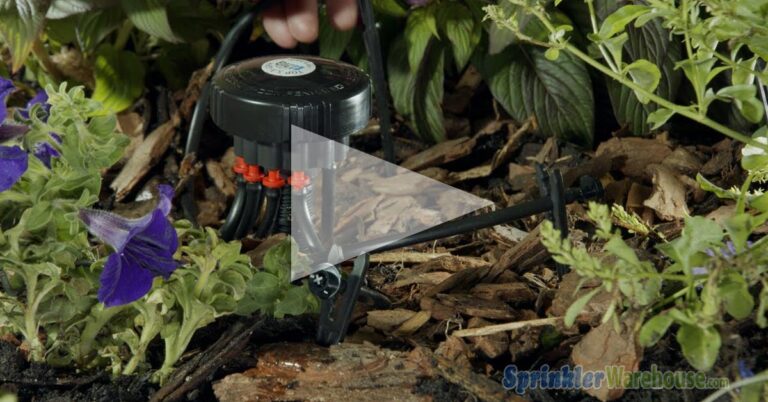Irrigation Pump Installation Explained
This article explains pump installation for irrigation. The water is in the lake and you want it on your yard. This means you need a pump to move the water from the lake to your irrigation system. Choosing the pump is addressed in another article. We’ll talk about how you put it in and what you need to do it. Pumping from a well is the same basic procedure.
Basically we will have a pipe, probably PVC, going down into your water supply, up through a pump and into your system. So let’s start with the pipe and the water. If you are lucky you have lots of fish in your lake. Unfortunately, you also have sediment, plants, bugs and other things that will not go through your sprinkler heads. The first thing to install is some sort of filter/strainer. It fits on the end of the pipe and keeps the larger trash out.
Foot Valve Filter:
One type of filter is a foot valve. This is a combination of a filter and a check valve. A foot valve keeps the water in the pipe even when the pump is turned off. This means that the pump is kept wet (primed) and water is at the pump as soon as you turn it on. If water ran back down to the lake the pump would only have air to pull. This is an example of a foot valve and strainer combination. They can be PVC, aluminum, brass or steel. Click here to shop for check valves and foot valves.
Basket Strainer/ Self-Cleaning Strainer:
Some other options are a basket strainer or a self-cleaning strainer. If you use either one of these, you will need a check valve, too, or the pump will not stay primed. The exception to this is if you have a self-priming pump. A basket strainer or self-cleaning strainer is all you need then. Click here to shop for self-cleaning strainers, basket strainers and other pump accessories.
Now we have PVC pipe running up hill to the pump. The end in the water must be secured to something: dock, pier, post, etc. It cannot float free or it will break. The size of the PVC will be determined by your pump. For both looks and freeze protection you might want to bury the pipe. If you leave it above ground you will need to stake it down and possibly insulate to protect from freezing.
The pump itself will need to be bolted to a concrete slab and connected to your pump switch and controller. So what do we need and why?
At The Pipe End/ Strainer
To fasten to a post:
- Strapping. Usually galvanized, available at almost any hardware store. Available in rolls or pre-cut to length.
- Nails, should be galvanize, 16p.
- Claw hammer.
- Tin snips to cut strap.
- Leather gloves and eye protection
To fasten to a pipe:
- Drill, preferably cordless
- Good, grounded extension cord if your drill is not cordless
- Assorted drill bits
- Phillips and/or slotted screwdriver
- DO NOT PUT THE EXTENSION CORD IN THE WATER. Please don’t.
For the PVC:
- Primer and cement
- Hacksaw
- Pipe tape (commonly called Teflon tape, even though it’s not)
- Saw horses or cinderblock to lift pipe off ground while cutting.
- Pipe and fittings, determined by pump and location
- Tape measure. Measure everything twice. Trust me.
- If placed above ground you will need some sort of stakes to hold the pipe in place
For the Pump:
The pump needs to be bolted down to a slab. If possible, buy one pre-made. If you need to make one follow factory recommendations and you will need:
- Board 1”x4: to length for framing.
- Saw, hand or power
- Hammer for nails and stakes
- 1”x2”x12” stakes
- 8p or 10p nails. Duplex/double head are best
- Wire mesh or #3 rebar re-inforcing for concrete. Some stores sell pre-cut.
- 24” bolt cutters if you have to cut your own rebar
- Tie wire (also known as baling wire) if you tie your own rebar
- Pliers, preferably side cutters.
- Bags of concrete for slab
- Something to mix concrete in: bucket, wheelbarrow, etc.
- Bolts to mound pump to concrete. See factory recommendations.
Miscellaneous:
- A bucket or hose to put water in the pump to prime and to mix the concrete
- Shovel for digging ditch and mixing concrete
- Rags
- Wire nuts
- And if you are like me, a first aid kit.




























